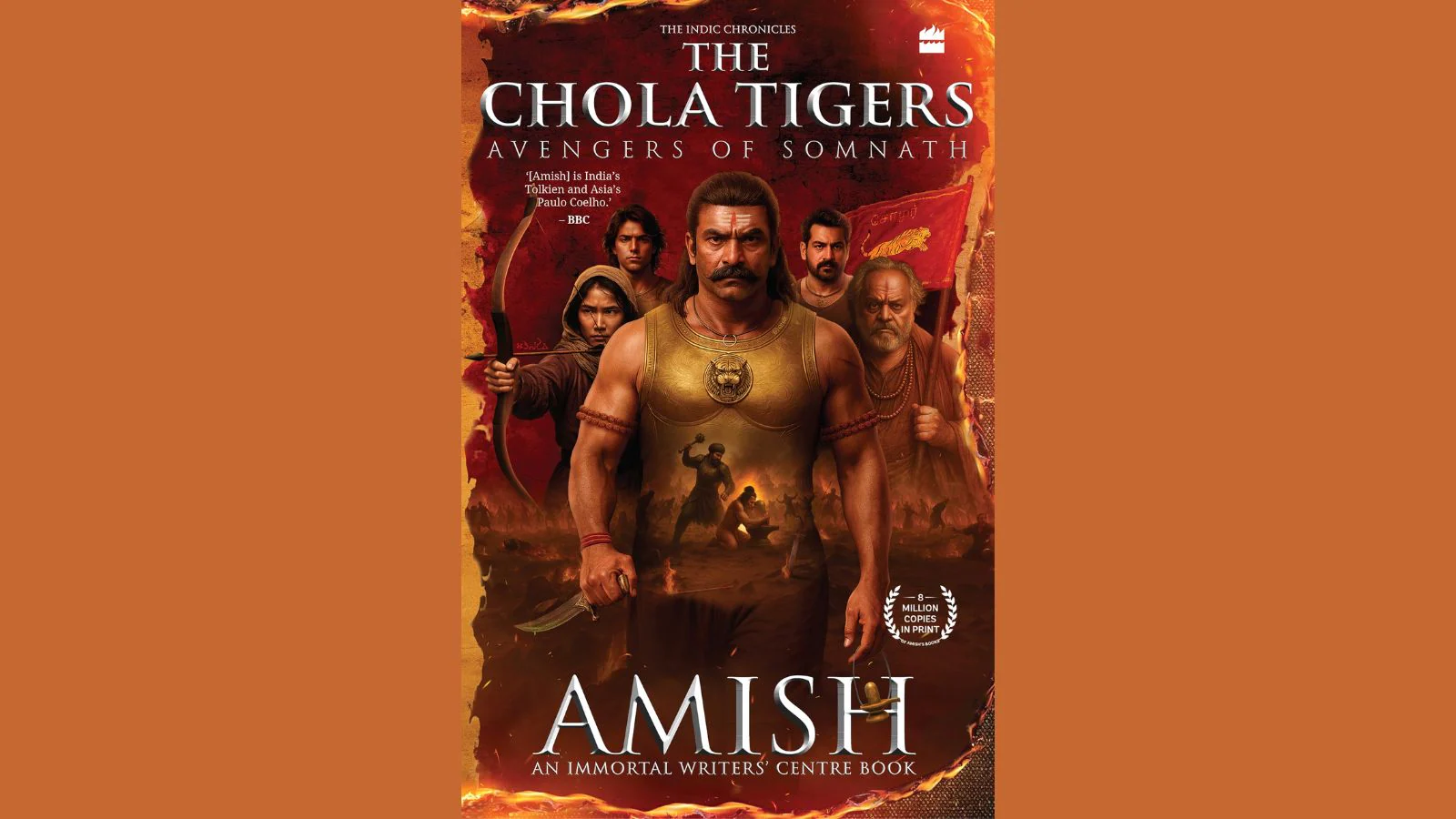Copyright news18

Author Amish Tripathi has, over the years, carved a niche for himself as India’s foremost storyteller of mytho-historical fiction. From The Immortals of Meluha to Legend of Suheldev, his works have celebrated India’s civilisational depth, cultural pride, and spiritual ethos. With The Chola Tigers: Avengers of Somnath, he once again ventures into the realm where history meets imagination, delivering a rousing tale of vengeance, unity, and dharma that rekindles the embers of forgotten valour. Set in the aftermath of the infamous 1025 CE plunder of the Somnath Temple by Mahmud of Ghazni, The Chola Tigers imagines what might have happened if Bharat had chosen to strike back. It begins with the devastation of the sacred Shiva Linga at Somnath lies shattered, thousands have been slain, and the land of Bharat bleeds under humiliation. Yet, amidst this ruin, five individuals make an oath to avenge, to restore, and to reclaim. ‘The Chola Tigers’ by Amish Tripathi Among these avengers is a Tamil warrior, a Gujarati merchant named Someshwar, a devotee of Lord Ayyappa, a scholar-emperor from Malwa, and none other than the mighty Emperor Rajendra Chola himself, the sovereign whose empire stretched from the Ganga to the distant shores of the South China Sea. Their mission: to travel from the sunlit grandeur of Gangaikonda Cholapuram to the bloodstained court of Ghazni and to retrieve what was stolen, not merely the Somnath Linga, but the pride of an entire civilisation. Amish’s narrative is taut, cinematic, and infused with passion. His pen turns every setting into a vivid panorama from the shimmering temples of the Chola capital to the biting chill of the Afghan plains. The reader can almost smell the incense and the blood, feel the dust rising from hooves, and hear the clang of swords as dharma clashes with adharma. The attention to historical texture is striking; every architectural detail, military formation, and cultural ritual feels painstakingly researched and authentically rooted. The author’s signature style of accessible prose fused with profound philosophy is in full play here. Passages like “If Lord Mahadev can take away something you never imagined you would lose, He can also bless you with something you never imagined you would receive. Charaiveti, charaiveti keep walking, keep walking” serve as the moral compass of the tale, reminding readers that vengeance in The Chola Tigers is not mere bloodlust; it is dharma, the righteous restoration of cosmic balance. The central characters are well-etched and compelling. Commander Narasimhan, the fierce yet introspective Chola general, embodies the Kshatriya ideal of valour guided by restraint. His deputy Vijayan and the enigmatic woman warrior Amal add layers of emotion and humanity to the mission. Even the portrayal of Mahmud’s wife, Kausari Jahan, is nuanced; she represents the tragic moral conflict within the enemy camp. If there’s one mild regret, it is that Emperor Rajendra Chola himself doesn’t occupy as much narrative space as one would wish. Given his historical stature as one of India’s greatest maritime emperors, his presence, though commanding, sometimes feels distant. Yet, his influence permeates the book like a guiding force—a symbol of India’s once-united civilisational might. The battle scenes are where Amish’s writing achieves its most cinematic rhythm. Each confrontation on land or sea brims with tension and grandeur. The roar of the cavalry, the swish of arrows, and the desperate cries of warriors create an immersive experience that rivals the best of historical epics. The deaths of characters feel personal, each a sacrifice, a testament to the spirit of Bharat that refuses to kneel before tyranny. But beyond the blood and steel lies a deeper current, that of unity. The Chola Tigers are not just about revenge; it’s about rediscovering the spirit of Bharatvarsha, transcending language, caste, and region. A Tamil warrior and a Gujarati merchant stand shoulder to shoulder, proving that when the sacred soil of India is defiled, every son and daughter of the land rises as one. This theme of unity through diversity is powerfully woven into the narrative, reminding readers of an age when India’s strength was in her spiritual cohesion. The author also offers a subtle commentary on the civilisational resilience of India. Before the story begins, a haunting passage declares: “Every other pre-Bronze Age civilisation is dead. But we are still here. We are still standing. And we will be there till the last human lives. For our motherland is Sanatan. She is immortal.” It’s this assertion that Bharat survives because she is Sanatan, eternal, which forms the emotional and philosophical spine of the book. Even in defeat, the Indian spirit plots its return. Even in destruction, dharma finds renewal. In tone and vision, The Chola Tigers is a natural successor to Legend of Suheldev: The King Who Saved India. Both books reclaim India’s historical memory, presenting the ancient and medieval past not as a tale of helpless invasions but as one of fierce, determined resistance. Amish’s bibliography and historical notes at the end further affirm his commitment to research-driven storytelling, an approach that combines creative imagination with academic rigour. By the time the book reaches its climax, the reader is left with goosebumps. The vengeance, when it comes, is not merely military; it is civilisational, spiritual, and moral. And as the final pages close, a profound sense of pride lingers in a land that never surrenders, pride in a people who live by the eternal dictum: Charaiveti, Charaiveti keep walking. In an age where historical fiction often bends to fashionable narratives, The Chola Tigers stands tall as a counter-current, unapologetically Indian, deeply dharmic, and passionately patriotic. It is not merely a novel; it is an invocation, a reminder of who we were and who we still are. Verdict: The Chola Tigers is a magnificent blend of history, heroism, and heart. It makes you bleed for Bharat, fight for her honour, and rise with her glory. A must-read for every Indian who believes that our civilisational story did not end with the invasion, it only began anew every time we chose to fight back. The writer is a technocrat, political analyst, and author. He pens national, geopolitical, and social issues. His social media handle is @prosenjitnth. Views expressed in the above piece are personal and solely those of the author. They do not necessarily reflect News18’s views.



